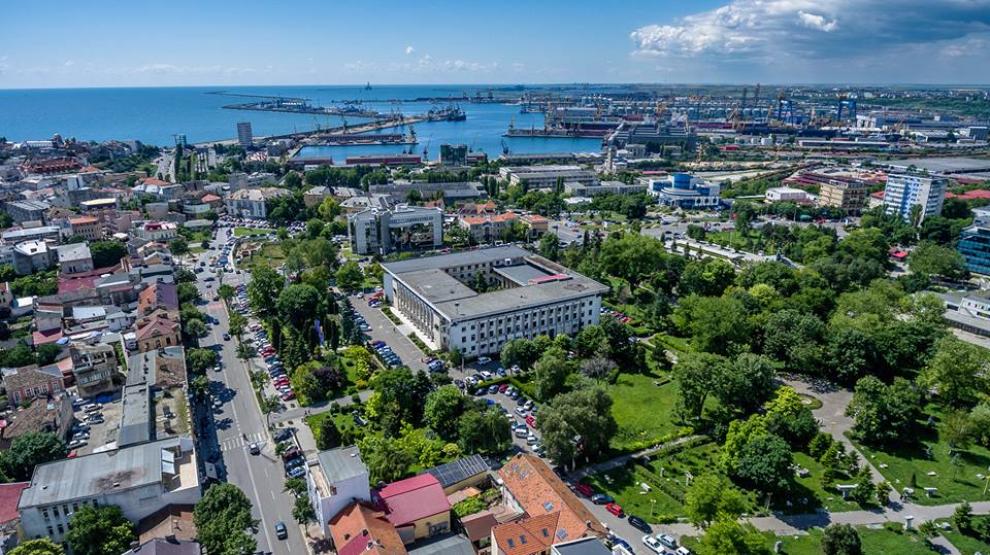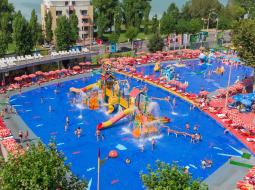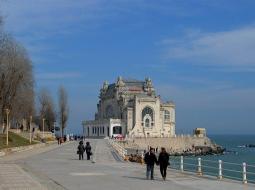Thessaloniki gets ready for its metro launch in November
The underground rapid transit lines have been under construction for almost two decades due to various project delays
 TheMayor.EU logo
TheMayor.EU logo 
The city was named Constantiana in honour of the half-sister of Roman Emperor Constantine the Great. The city lay at the seaward end of the Great Wall of Trajan, and has evidently been surrounded by fortifications of its own. Having been part of the Bulgarian Empire for over 500 years, and later of the independent principality of Dobrotitsa and of Wallachia under Mircea I of Wallachia, Constanța fell under the Ottoman rule around 1419.
A railroad linking Constanța to Cernavoda was opened in 1860. In spite of damage done by railway contractors, there are considerable remains of ancient masonry walls, pillars, etc. An impressive public building, thought to have originally been a port building, has been excavated, and contains the substantial remains of one of the longest mosaic pavements in the world.
In 1878, after the Romanian War of Independence, Constanța and the rest of Northern Dobruja were ceded by the Ottoman Empire to Romania. The city became Romania's main seaport and transit point for many of Romania's exports. The Constanta Casino, which is both a historic monument and a modern symbol of the city, was the first building constructed on the shore of the Black Sea after Dobruja came under Romanian administration, with the cornerstone being laid in 1880.
On October 22, 1916 (during World War I), the Central Powers (German, Turkish and Bulgarian troops) occupied Constanța. According to the Treaty of Bucharest in May 1918, Constanța remained under the joint control of the Central Powers. Allied troops liberated the city in 1918 after the successful offensive on the Thessaloniki front knocked Bulgaria out of the war.
In the interwar years, the city became Romania's main commercial hub, so that by the 1930s over half of the national exports were going through the port. During World War II, when Romania joined the Axis powers, Constanța was one of the country's main targets for the Allied bombers. While the town was left relatively undamaged, the port suffered extensive damage, recovering only in the early 1950s.
Source: Wikipedia
Considered the oldest continuously inhabited city in Romania, Constanta provides a mix of culture and perpetual change. Its strategic position by the Black Sea makes it one of the largest ports in Europe, a gateway between the East and the West. Constanta is located in the South-East side of Romania, on the Black Sea Coast, with a population of about 310,000 people. Constanța is the administrative center of the county with the same name and the largest city in the Southeastern development region of Romania.
Known as one of the largest port cities in Europe with a variety of intermodal connections, Constanța evolved over time into one of the most promising business opportunity location the CEE can offer. With a rich history of culture, business and trade, Constanța became one of the most competitive and dynamic cities in the European Union during the last decade.
The main sectors that have driven the Constanța economy in recent years are: oil production; tourism; ship building; retail; an real estate. Real estate, entertainment (arts and recreational activities), and oil refining have registered the most dynamic growth in recent years. Main exports include: oil products; ships; agricultural products (one of the main products handled by the Constanța Port); and metals (also handled by the Port).
The existent port infrastructure, as well as the good connective infrastructure (ring road, highway to Bucharest, high-speed rail to Bucharest, channel to the Danube) make Constanța an ideal investment site for logistics companies and manufacturing companies. Constanța is actually an ideal investment site for assembly work (particularly for bulky products, such as automobiles or electronics), for companies outside the EU looking to get access to the EU markets.
Source: ctinvest.ro

According to a World Bank survey, half of the Romanian population (around 10 million people) has visited Constanta at least once in the past 5 years. Mamaia Resort, which is part of Constanta, has a beach with fine sand that extends 8 kilometres and is 100 metres wide. There are more than 30,000 formal and informal accomodation units in Constanta. More than 80% of the city’s accommodation is concentrated in the Mamaia Resort, where over 1.1 million square meters of lodging units are built, most with functions of accommodation, catering, and leisure.

Constanta is a perfect mix between old and new, between history, tradition and modernism, between summer fun and quality multiculturalism, a unique religious mosaic in Europe and a city full of business opportunities.
Here there are unique archaeological vestiges, iconic Romanian and international heritage buildings, and one can spend an ideal holiday on the large and sunny beaches of the Black Sea. The Casino, the Aquarium, the Roman Edifice with Mosaic, the Roman Thermae, the museums, the cultural institutions, the Ovid Square, the Old City Centre, the Archaeological Park, Constanta Port are just some of the touristic and economic attractions that should not be missed.
The Natural Sciences Museum Complex is considered an important reference point for the cultural and scientific image of the municipality, with a high emblematic value in the summer offer of the Romanian seacoast. It consists of Dolphinarium, Planetarium, Exotic Birds Exhibition, Micro Delta.
Constanța’s tourism based and substantial potential for growth make it an ideal location for public-private investments in tourism infrastructure with a focus on expanding the international tourism market.
Address: bd. Tomi snr.51, Constanța